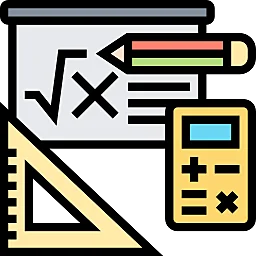Quants Menu
- HCF and LCM
- Number System
- Number Decimals & Fractions
- Surds and Indices
- Divisibility
- Ages
- LCM
- HCF
- Inverse
- Speed Time and Distance
- Work and Time
- Boats and Streams
- Pipes and Cisterns
- Averages
- Allegations and Mixtures
- Ratio and Proportions
- Simple & Compound Interest
- Simple Interest
- Compound Interest
- Percentages
- Profit & Loss
- Successive Discount 1
- Successive Discount 2
- AP GP HP
- Arithmetic Progressions
- Geometric Progressions
- Harmonic Progressions
- Probability
- Permutation & Combination
- Combination
- Circular Permutation
- Geometry
- Heights and Distances
- Perimeter Area and Volume
- Coordinate Geometry
- Venn Diagrams
- Set Theory
- Algebra
- Linear Equations
- Quadratic Equations
- Logarithms
- Clocks
- Calendars
- Clocks and Calendars
- Finding remainder of large powers
PREPINSTA PRIME
Circular Permutations Questions and Answers
Definition of Circular Permutations
On this page, you will get all the information related to Circular Permutation along with Sample Question.
Go through this page to get Sample Circular Permutation Questions and Answers for clear understanding of the Concept of Circular Permutation.

Rules of Circular Permutations
Circular permutations can be a bit confusing as it completely different from the linear permutations or arrangement.
The below mentioned rules will help to give you insights regarding the rules as well as the formulas in order to avoid any mistakes.
- The numerous methods to organize different items along a stable (i.e., not able to chosen up out of the even and spun over) circle is Pn = (n-1)!.
- The number is (n-1)! as a substitute for the normal factorial n! as all cyclic arrangements of items are equal since the circle can be swapped.
- The total number of permutations decreases to \frac{1}{2} (n-1) when there is no reliance identified.
- The same will be the situation when the location of the individual or thing does not rely on the arrangement of the permutation.
It is similar to the order of beads of a similar color in a necklace.
Explanation for Circular Permutation using 5 Objects:
Circular permutation is a concept in combinatorics that deals with arranging objects in a circular or cyclic manner.
In a circular permutation, the order of objects matters, but rotations of the arrangement are considered identical.
To understand this better, let’s consider an example with five objects labeled A, B, C, D, and E arranged in a circle:
ABCDE
Now, if we were to rotate this arrangement, we get different “linear” permutations:
BCDEA, CDEAB, DEABC, EABCD
However, in circular permutation, these rotations are considered the same circular permutation because they represent the same arrangement when viewed in a circular manner. So, the circular permutations of the above arrangement are:
ABCDE (original arrangement)
BCDEA (rotation of original)
CDEAB (rotation of original)
DEABC (rotation of original)
EABCD (rotation of original)
In total, there are five circular permutations.
The formula to calculate the number of circular permutations for a set of n objects is (n-1)!.
This is because there is one linear arrangement for n objects, but we can rotate this arrangement in (n-1) ways without creating a new circular permutation.
It’s important to note that circular permutations are different from linear permutations, where the order of objects matters, and rotations are not considered identical.
In linear permutations, the number of arrangements for n objects is n!. However, in circular permutations, we divide the number of linear permutations by (n-1) to account for the identical rotations.
Prime Course Trailer
Related Banners
Get PrepInsta Prime & get Access to all 200+ courses offered by PrepInsta in One Subscription

Please login to report
Get over 200+ course One Subscription
Courses like AI/ML, Cloud Computing, Ethical Hacking, C, C++, Java, Python, DSA (All Languages), Competitive Coding (All Languages), TCS, Infosys, Wipro, Amazon, DBMS, SQL and others
- Probability – Questions | Formulas | How to Solve Quickly | Tricks & Shortcuts
- Permutation & Combination – Questions | Formulas | How to Solve Quickly | Tricks & Shortcuts
Others
- Combination – Questions | Formulas | How to Solve Quickly | Tricks & Shortcuts
- Probability –
Questions |
Formulas |
How to Solve Quickly |
Tricks & Shortcuts - Permutation & Combination –
Questions |
Formulas |
How to Solve Quickly |
Tricks & Shortcuts
Others
- Combination –
Questions |
Formulas |
How to Solve Quickly |
Tricks & Shortcuts

 Apply For Jobs
Apply For Jobs Get Hiring Updates
Get Hiring Updates



